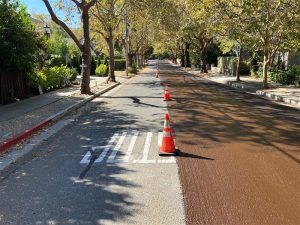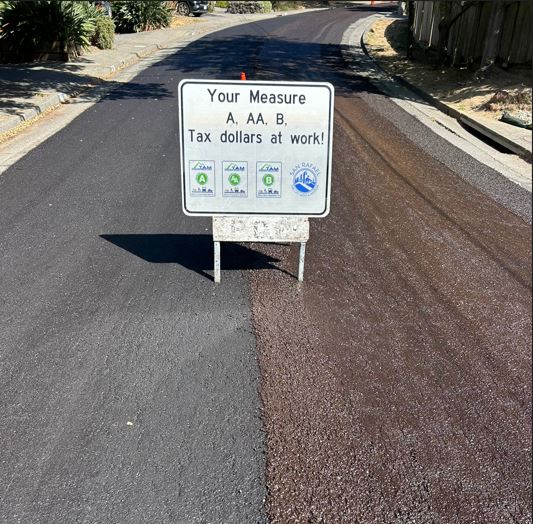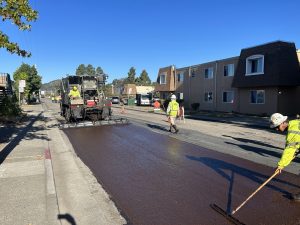
Pavement Management Program
Project Contact
Overview
Project goals
- Identify the streets in San Rafael in most need of resurfacing (repaving or slurry seal) and execute an annual program to resurface City streets
- As a part of street resurfacing, upgrade existing sidewalks at intersections with accessible ADA curb ramps
- Develop and maintain a multi-year pavement management plan to prioritize street repairs and focus on cost-effective techniques to extend the useful life of streets and improve the condition of the overall road network
Want more information on current street resurfacing projects? Check out the sidebar on the left-hand side and click on the project you want to learn more about!
Budget
| Construction | $800,000-$1.2m/annually depending on gas tax revenues |
Annual Projects
Pavement Maintenance Projects:
2024/25 Pavement Maintenance Project
The City of San Rafael awarded the construction contract for the 2024/25 Pavement Maintenance Project to Pavement Coatings Co. on August 19, 2024. The project applied pavement treatments through slurry seal or microsurfacing to approximately 187,000 square yards of roadway. The project focused on areas in West San Rafael neighborhoods. Construction of the project began in September 2024 and was completed in October 2024.
The plans and specifications, deemed reasonable by the City Engineer for the project, are available at this link: Pavement Project Plans and Specifications document.
The project was presented to City Council during the August 19, 2024 regular meeting. Please click the following link to view the presentation: August 19, 2024 Annual Pavement Project Presentation to City Council
2023/24 Pavement Maintenance Project
The City of San Rafael awarded the construction contract for the 2023/24 North San Rafael Pavement Maintenance Project to VSS International on September 5, 2023. The project applied pavement treatments through slurry seal or microsurfacing to nearly 125,000 square yards of roadway primarily in the Terra Linda neighborhood. Treehaven Drive and a section of Culloden Park Road also received pavement maintenance as part of a partnership with the Marin Municipal Water District. The project began in October 2023 and was completed in December 2023.
The Department of Public Works also completed additional road maintenance in the Canal Waterfront neighborhood, including Louise Street, Larkspur Street, Alto Street, and Verdi Street. The work finished in October 2023 and completed the pavement project that began in the Canal Waterfront neighborhood in 2022.
Slurry Seal Projects:
2022/23 Slurry Seal Project
On August 1st 2022, the 2022/23 Slurry Seal project went to City Council to award a construction agreement to American Asphalt. A slurry seal is the application of a mixture of water, asphalt emulsion, aggregate (very small crushed rock), and additives to an existing asphalt pavement surface. The 2022/23 Slurry Seal project included the removal of existing striping, crack sealing, slurry sealing, and the replacement of traffic striping and new crosswalks. The project placed almost 130,000 square yards of slurry seal on 8 miles of roadways!
2021/22 Slurry Seal Project
In October 2022, the City completed the 2021/22 Slurry Seal project that covered 12 miles of roadways with 200,000+ square yards of slurry seal. The project focused on the roadways in the Glenwood, Loch Lomond, and Dominican neighborhoods.











